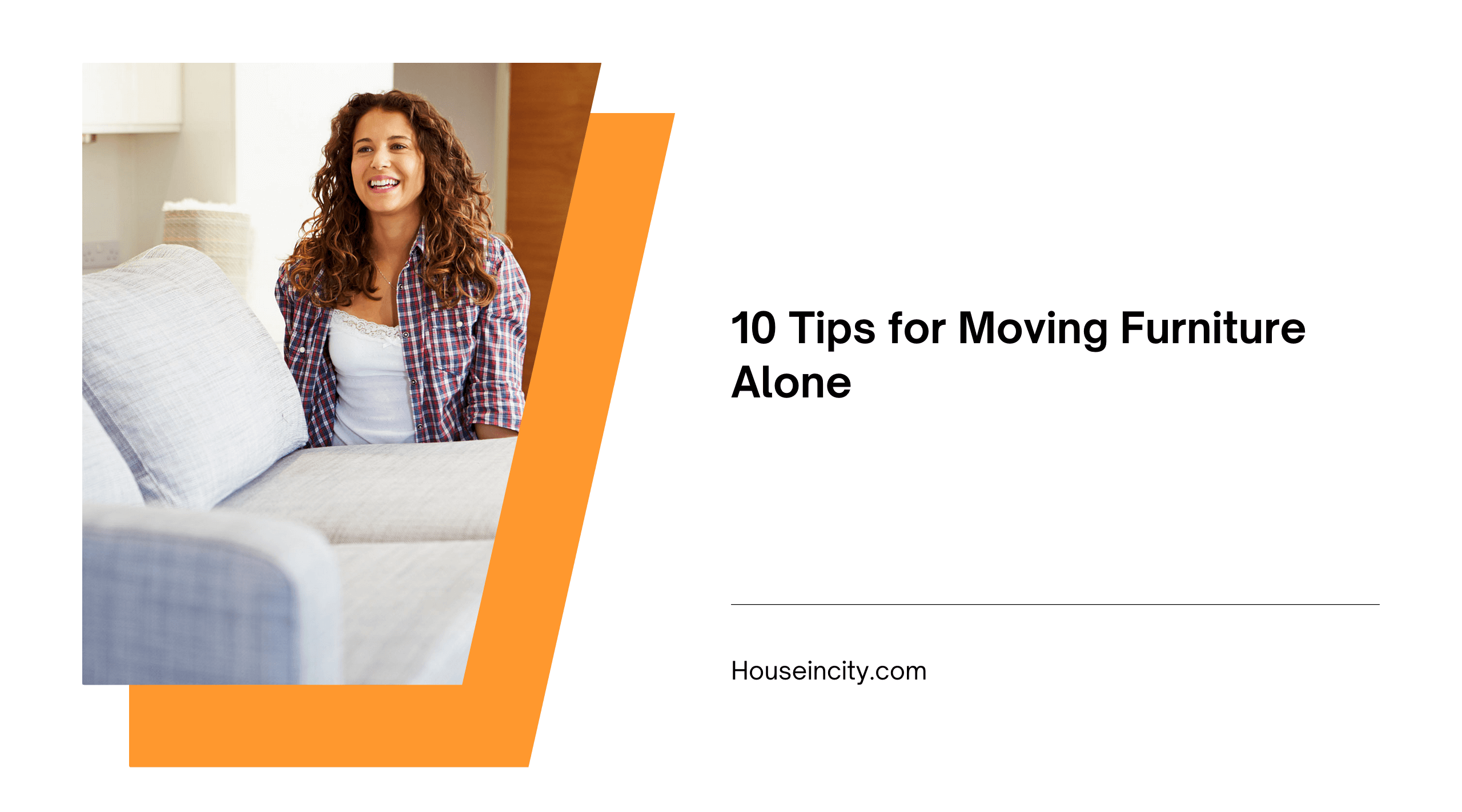Sometimes you are all there is. There isn’t anyone else around who can help you move the furniture. Do you wait until someone happens by? Do you call a friend or relative that you’ve used way too many times before? Moving furniture’s not an emergency, and you like to save the frantic calls to relatives until you have one of those. You can’t call 911, or the police, or the city maintenance crew to help. It’s up to you and only you. So what do you do when you have to move furniture alone? Here are 10 tips to make your task easier.
Tip #1: Study the Problem
Study the whole situation before you take on the challenge. Few things are worse than throwing your whole effort into something to discover you liked it better the way it was before. Sometimes it helps to draw a scale drawing and map things out on grid paper. But if nothing else, at least measure the dimensions of the furniture piece you intend to move. In addition, measure any doorways or hallways through which it must pass, and measure the new place that it will call home.
Tips #2: Unload and Disassemble
Unload what can be unloaded. Take drawers out and carry them separately. Take cushions off chairs. Be sure to check for coins when you remove the cushions. You might as well get paid for your effort. Take mirrors off, knobs off, feet off, glass tops off, and any other piece off that can be disassembled. Make the furniture lighter to move and slimmer to squeeze through narrow spaces. Keep in mind, a door comes off its hinges, giving you an extra inch or two.
Tips #3: Tie Up Your Sofa-Bed
If you are moving a sleeper-sofa or sofa-bed, it may help to remove the mattress and make the furniture piece lighter. Once you do that, tie a strap around the sofa to hold the frame together. Without a strap, if you tip the sofa on end to move it, your bed frame is apt to open up on you in the worst of places.
Tip #4: Use Sliders
You can get commercial sliders to put under furniture feet. This is advisable if you want to avoid scratching hard wood floors or tearing up vinyl. But you can also make your own with some rags, a throw rug, or a blanket. Simply lift the legs of your furniture piece and put them onto your slider. Then drag your furniture where you want it. It’s faster and more productive than the old method of sliding furniture on a straw broom–but it’s less amusing.
Tip #5: Roll It
If you can get the furniture onto wheels and roll it, you can save a lot of effort. Use a dolly if you have one. If not, use a wagon or the wheels from under a potted plant. The wheel was invented for ease; so look for some wheels. And if you are really imaginative, you can roll a heavy furniture piece across dowel rods–moving a rod from the back to the front, every few feet. It works, but it may cause havoc with flooring.
Tip #6: Tip It
If you get frustrated with a piece of furniture, walk away from it for a bit and restudy the situation. Sometimes a simple twist or diagonal entry through a narrow space is all it takes to get a piece of furniture from point A to point B.
Tip #7: Walk It
Walk the furniture piece, literally. Lean it back onto its back edge or legs and walk left side then right side forward. Or if you can’t lean it back, just push left side forward, then right side forward. Do it in baby steps and you will eventually get it moved.
Tip #8: Position the Weight
Decide which part of the furniture piece is the heaviest or built the strongest, and carry or handle that part. If you just grab or yank, you could end up yanking off the back of a bookcase or pulling off the top of a stand. Imagine that it’s like a can of coffee. You wouldn’t want to pick up a coffee can by the lid.
Tip #9: Use Your Feet
No–you are not going to kick the piece to where it goes. But what you could do with your feet may sound about as odd. Remove your shoes, get onto your back beside the furniture piece, bend your knees, and press against the heavy piece with your feet. It gives you more power and leverage. Use this tip only if the carpet is secure, or the furniture piece is on casters. Otherwise, you could end up tearing or scratching your floors.
Tip #10: Save Your Back
There is a correct way to lift. Lift with your legs–not your back. To lift properly, bend at the knees slightly, begin lifting with your legs first, and be certain your upper back is straight. If you lift with your back, you will invite injury. You’ll be laid up for a while, and that furniture piece will stay right where it is–mocking you.
If you need to move furniture, and you have no one to assist, these 10 tips can help you get the job done alone. But if need be, you can always invite someone muscular to dinner and spring the furniture request after dessert.
